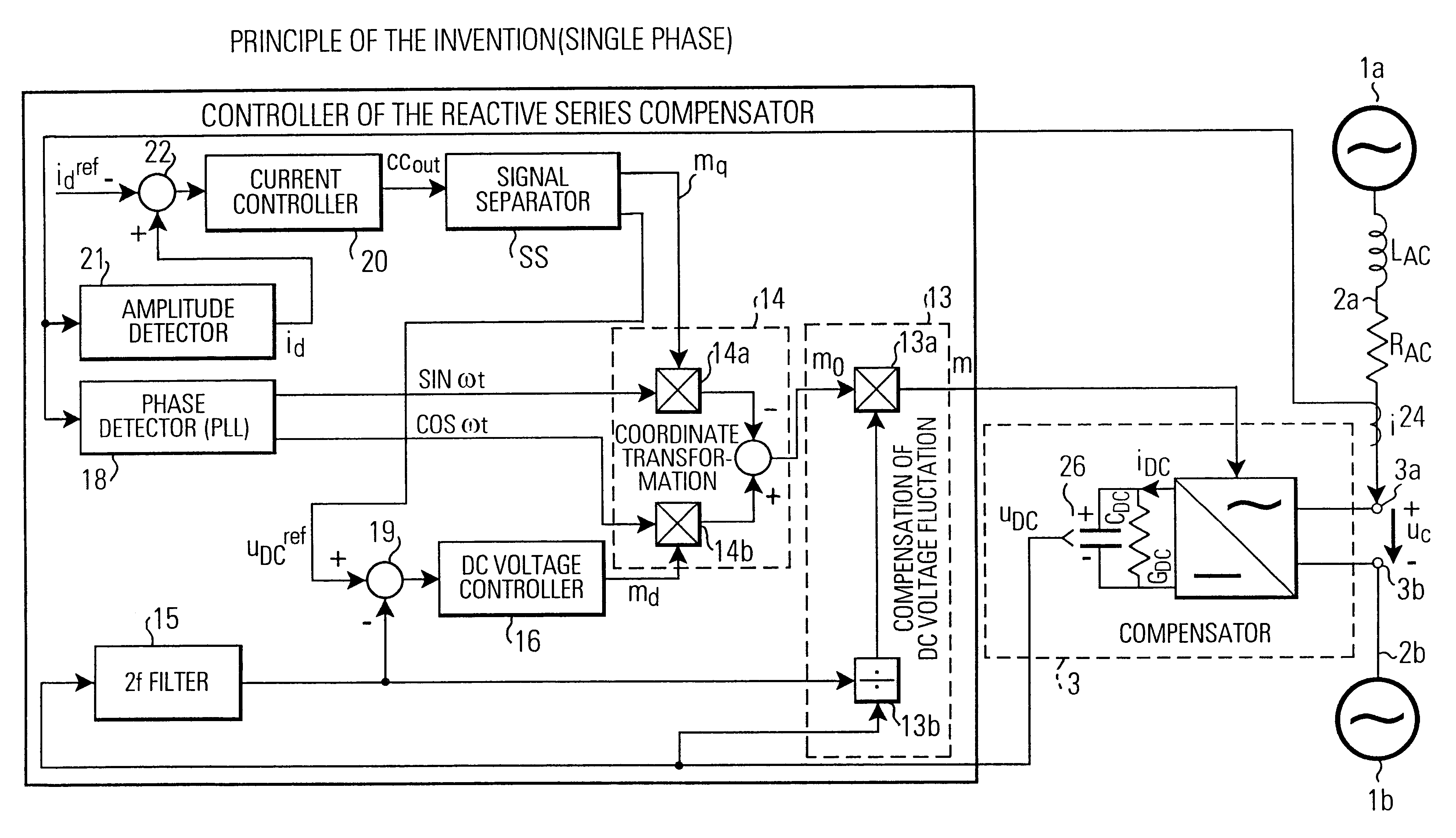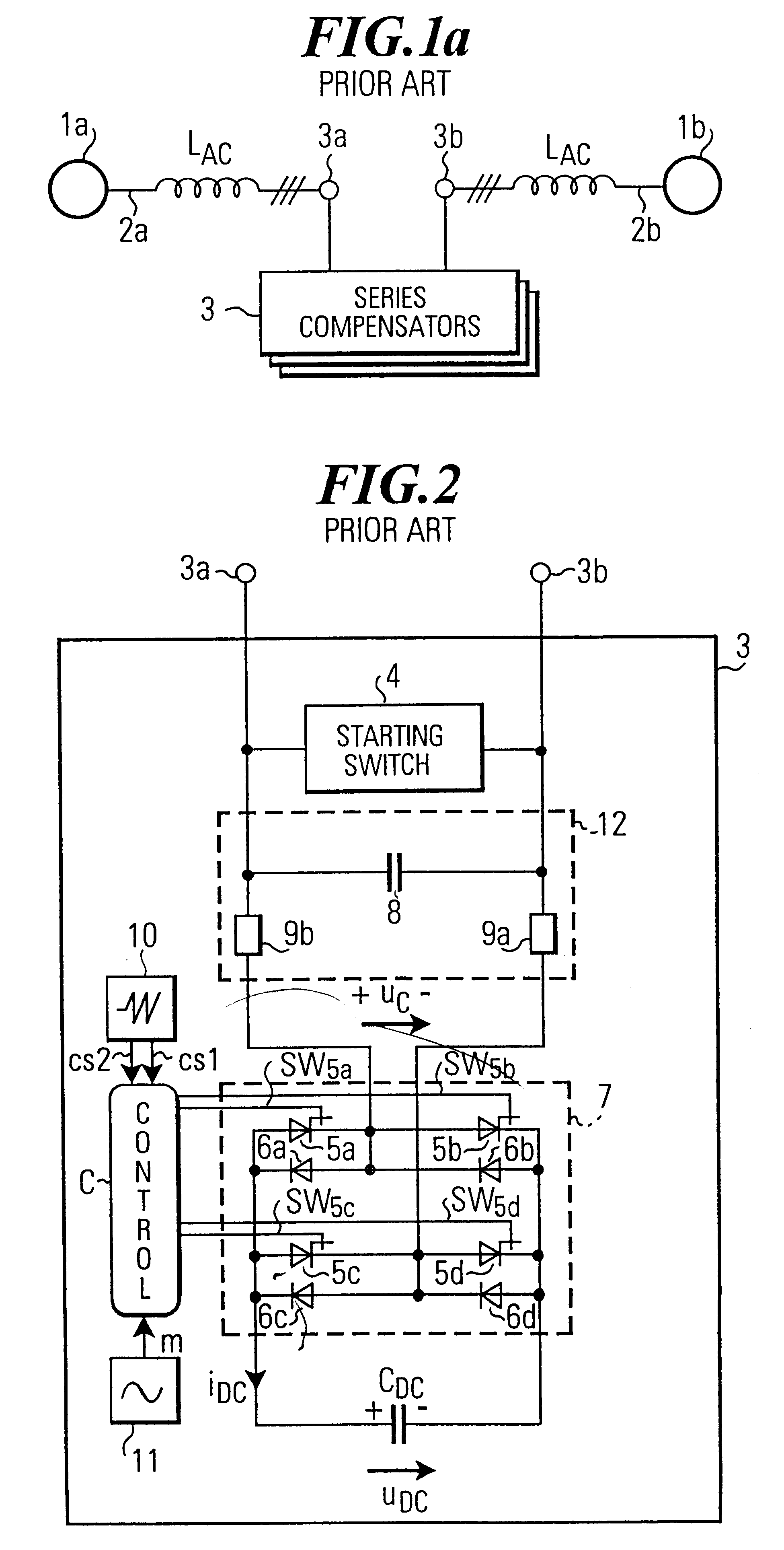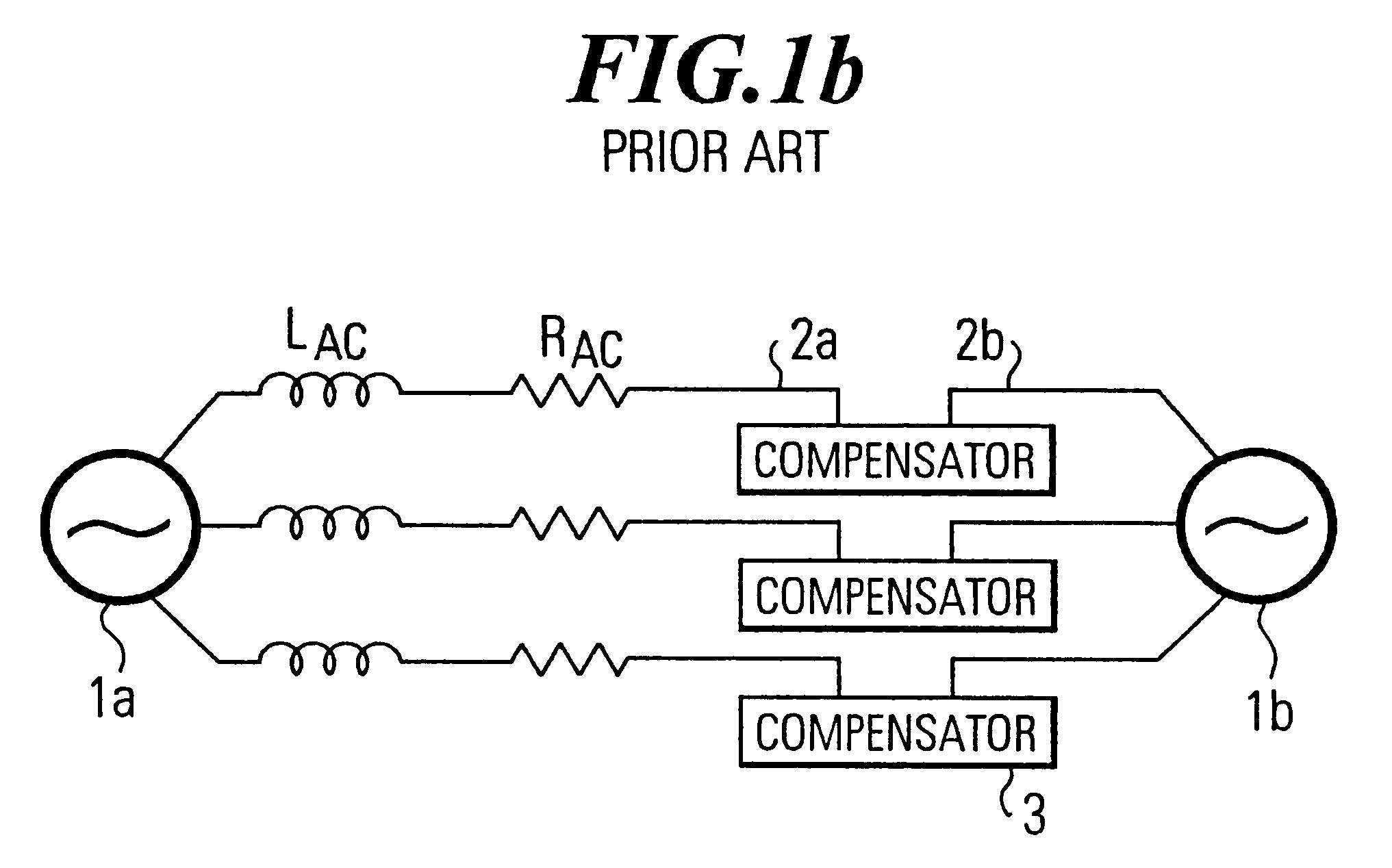Controller of adjustable DC voltage for a transformerless reactive series compensator
a reactive series and controller technology, applied in the direction of process and machine control, ac network circuit arrangement, instruments, etc., can solve the problems of harmonic generation in the output voltage of the compensator terminal, the failure of control, and the loss of switching losses and leakage losses of capacitors, so as to reduce the switching losses and improve the dynamic behaviour of the controller. , the effect of improving the dynamic behaviour
- Summary
- Abstract
- Description
- Claims
- Application Information
AI Technical Summary
Benefits of technology
Problems solved by technology
Method used
Image
Examples
first embodiment
FIG. 20 shows a signal separator SS1. As explained above, the control signal cc.sub.out of the current controller 20 which is input to the signal separator SS1 is the amplitude of the compensator terminal output voltage u.sub.c. Since the maximum output voltage u.sub.c of the compensator is basically the maximum DC capacitor voltage, also the output of the current controller cc.sub.out has a maximum value determined by the maximum DC capacitor voltage.
In FIG. 20 a first limiter 200 is provided for limiting the control voltage cc.sub.out to a voltage level u.sub.DC.sup.min when the control voltage cc.sub.out exceeds this predetermined limit voltage u.sub.DC.sup.min. Likewise, if the control voltage cc.sub.out falls below the negative limit voltage -u.sub.DC.sup.min then the control voltage cc.sub.out will be limited to this negative limit voltage u.sub.DC.sup.min. Furthermore, a first divider 201 is provided for multiplying the output of the first limiter 200 with the maximum modulat...
second embodiment
A second embodiment of a signal separator SS2 having the control characteristics as shown in FIG. 22a is shown in FIG. 21. This signal separator SS2 comprises a third limiter 211 for limiting the control voltage cc.sub.out output by the current controller to a maximum modulation index m.sub.q.sup.max and a minimum modulation index m.sub.q.sup.min when the control voltage cc.sub.out respectively exceeds or falls below the maximum and minimum modulation indices, respectively. Thus, cc.sub.out is the modulation index level. The maximum modulation index m.sub.q.sup.min may be the negative value of m.sub.q.sup.max.
Furthermore, the signal separator SS2 comprises a second absolute value circuit 213 for determining the absolute value of the control voltage cc.sub.out. A first multiplier 212 multiplies the output of the absolute value circuit with a predetermined constant K.sub.2. A fourth limiter 214 limits the output of the second multiplier 212 to an upper threshold value u.sub.DC.sup.max...
third embodiment
A third embodiment of the signal separator SS3 incorporating such a rate limiter is shown is FIG. 23. The rate limiter 235 is provided in the lower path (responsible for the DC capacitor voltage adjustable control region). It may be arranged before the limiter 234 or after the limiter 234. In FIG. 23 the units 231, 232, 233 and 234 correspond to the units 200, 201, 202, 203 of the first embodiment in FIG. 20. The arrangement of the rate limiter 235 after the limiter 234 is preferable, because it avoids a rise-up delay from constant DC voltage to adjustable DC voltage.
PUM
 Login to View More
Login to View More Abstract
Description
Claims
Application Information
 Login to View More
Login to View More - R&D
- Intellectual Property
- Life Sciences
- Materials
- Tech Scout
- Unparalleled Data Quality
- Higher Quality Content
- 60% Fewer Hallucinations
Browse by: Latest US Patents, China's latest patents, Technical Efficacy Thesaurus, Application Domain, Technology Topic, Popular Technical Reports.
© 2025 PatSnap. All rights reserved.Legal|Privacy policy|Modern Slavery Act Transparency Statement|Sitemap|About US| Contact US: help@patsnap.com



